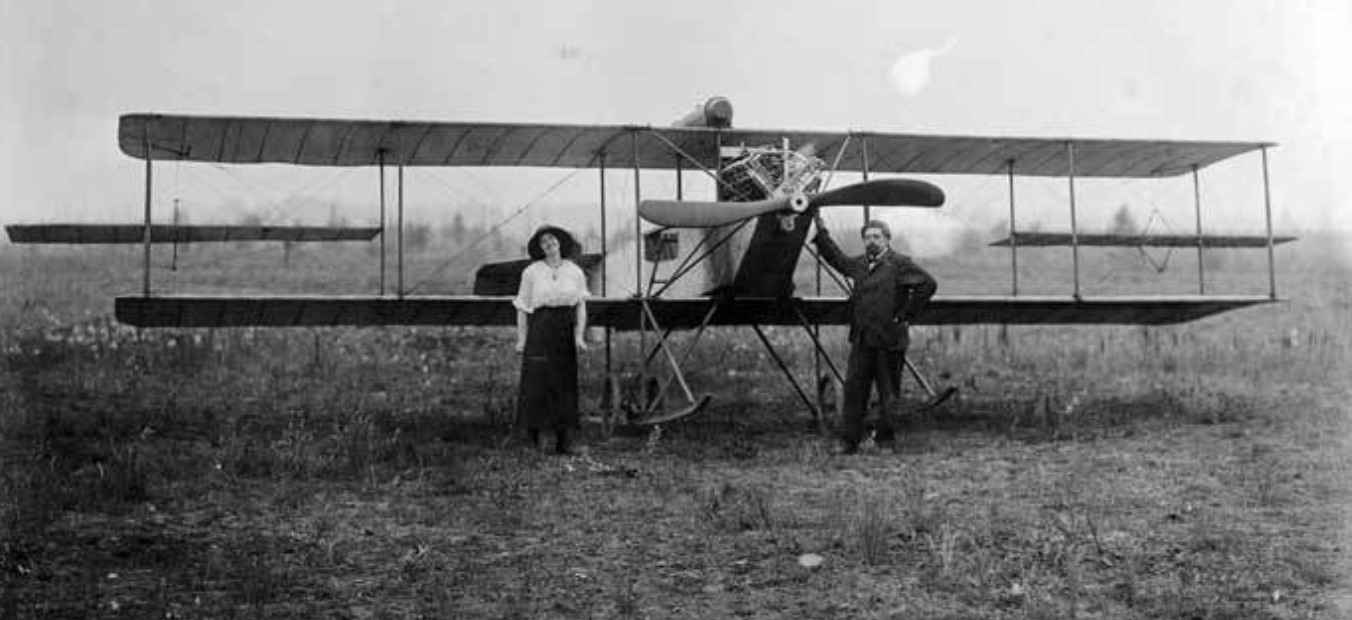The first airplane flight in Alaska occurred at Fairbanks on July 3, 1913.
Pilot Army Captain J. V. Martin had given a talk to the Seattle Press Club in March of 1912. A Fairbanks businessman was impressed and asked him to come to Alaska to give a flying demonstration.
Martin and his wife Lily Irvin Martin, who was England’s first woman aviator, shipped their crated airplane from Seattle to Skagway by steamship.
Still crated, it was then shipped by rail to Whitehorse, and then was shipped down the Yukon River to Fairbanks by paddleboat.
Once it was in Fairbanks, the two aviators reassembled the Gage-Martin Tractor bi-plane and on the evening of July 3, 1913, Martin took off from Exposition Park, flying over the town at an altitude of 200 feet, and at a speed of about 45 miles per hour.
This was the first airplane flight in Alaska history.
The couple flew the plane four more times around Fairbanks over the next three days. They then tried to sell the plane, but with no buyers stepping up, they dismantled it and crated it back up, before shipping it back to San Francisco, their home.

Now that is interesting conversation!
Good story. Probably none made Alaska aviation more noticeable than the Post/Rogers flight.
It would have had to be boated UP the Tanana R. to get to Fairbanks
Yes, technically speaking. Down the Yukon. Up the Tanana and Chena. The trip evidently took 20 days. – sd
Appreciate the article, and the observance of this significant event. However, it being the only article that refers to him as an Army Captain, I don’t think that was the case. Back then, aviators were so revered by the public that they were honorarily addressed as “Captain” or “Colonel”.
Perhaps someone with the Aviation Museum (Rob.S are you out there?) could clear up his exact status.
On this same line of thought, I’ll point out that the original caption on that photo refers to the couple as “Captain and Mrs. Captain James V. Martin”. I always snickered at that quaint “Mrs. Captain” designation, until I learned that she too was an aviator in her own right.
AWESOME! That’s what needs to be read by the kids. Another example of perseverance and commitment. In those days, that was a lot of work, the take down, the shipping, etc.
Like the miners who went to Coldfoot. You will big rusting boilers and iron plates to boilers on the Hammond River. Those came across the Yukon by pack animal or up the Yukon on the boats. Hard row to hoe. Alaska.
The Alaskan of today, no clue.